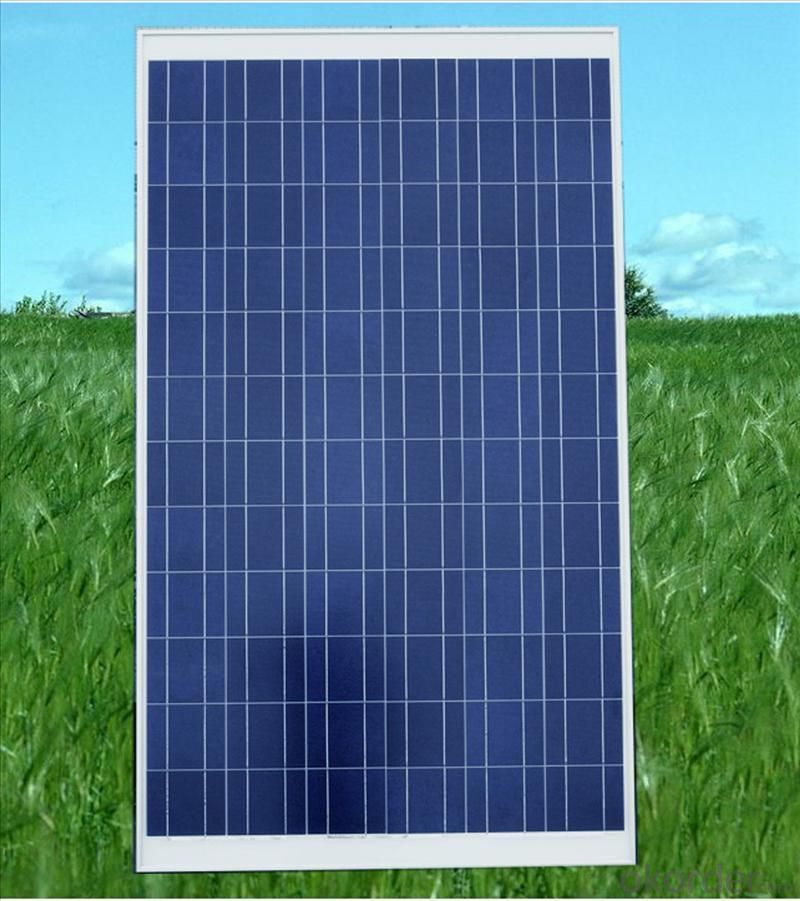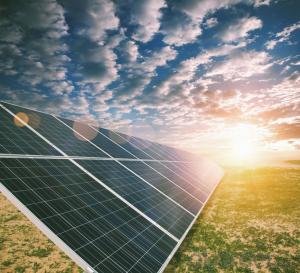HBM(305) Polycrystalline Silicon Solar Panels
- Loading Port:
- Tianjin
- Payment Terms:
- TT OR LC
- Min Order Qty:
- 200000 watt
- Supply Capability:
- 20000000 watt/month
OKorder Service Pledge
OKorder Financial Service
You Might Also Like
About us
We are a high-tech group wich specializes in solar products design,research, manufacture, sales,solar projects design and installation. There have three subsidiaries.
We have been engaged in PV manufacture and research industry for more than 20 years. We also own powerful technical resources and experienced research team in Hope Group.
We have the first class manufacture equipments and plant.Hope Group are qualified for many international and national authentications of TUV、IEC61215、IEC61730、CE and “ Golden Sun” in China PV industry, meanwhile ISO9001-2008,ISO14000, OHSAS18000, REDP and the certification of Hi-tech enterprise etc./ ( NDRC/GEF/WB-be selected in Chinese renewable energy development projects).
Our national sales service covers seven parts, including northeast, north, east, middle, south, northwest and southwest, international sales covers five continents and over forty countries, including Germany, Italy, Spain, France, America and Brazil etc. There is high efficient , specialized and experienced management team in Hope Group.
Our present annual capacity is 6 million for wafer, 60MWp for solar cells,200MWp for solar modules and one hundred thousand for solar applications. It is expected that the annual capacity of 2012 will be up to 30 million for wafer, 300MWp for solar cells, 1000MW for solar modules and 2 million for solar applications.
FAQ:
1. How long will my inquiry get response?
Your inquiry related to our products or prices will be replied within 24 hours.
2. Can I get professional service and suggestion?
Well-trained and experienced staffs to answer all your questions in fluent English.
3. Do you accept OEM or customized design?
OEM & ODM, any your customized lightings we can help you to design and put into product.
4. What if I need specific design?
Distributorship are offered for your unique design and some our current models.

Date sheet
| Maximum Power | 305W |
| Efficiency | 0.157 |
| Backsheet | Silver |
| Frame Color | White |
| Manufacture Site | China |
| Frame | Anodized Aluminum Alloy |
| Weight | 27KG |
Process is as follows:
1, the battery test
2, positive Welding - Inspection –
3, on the back of cascading - Inspection –
4, laying (glass cleaning, material cutting, glass pre-processing, laying) –
5, laminating –
6, to flash ( to the side, cleaning) –
7, fitted border (glue, loading angle keys, punching, install box, scrub I glue) –
8, the welding junction box –
9, high-pressure test –
10, component testing -- -
11 appearance inspection, packaging and storage;
- Q:Can solar panels be used to power a waste management facility?
- Yes, solar panels can be used to power a waste management facility. Solar energy can be harnessed to generate electricity which can be utilized to power the operations of a waste management facility, reducing reliance on traditional energy sources and promoting sustainability.
- Q:Hi everyone, I am a novice in solar energy system. I want to know if I am on the right track. Recently I bought a 30 W solar panel, 5 Amp controller, and a 22 Ah battery, how many watts and what kind of INVERTER do I need? I did an research some said 50 W and some said 300 W. And am I right on the 5 amp controller and 22 Ah battery to provide larger output of electric, or the higher the # the greater output for 30 W solar panel?Really appreciate for anyone who help!!!
- must be one of the place who's place have sun
- Q:Can solar panels be used in areas with high levels of radiofrequency interference?
- Yes, solar panels can be used in areas with high levels of radiofrequency interference. However, it is important to ensure proper grounding and shielding measures are in place to minimize the impact of radiofrequency interference on the performance of the solar panels.
- Q:Didnt solar panels use to cost around $250,000 5 years ago?
- For just 5 years ago, certainly not! Perhaps you are thinking of 50 years ago, the kind that was put on the early communication satellites? 5 years ago, there was a glut of polysilicon, so modules were actually a little cheaper than today. Solar cell makers were basically using the scraps thrown away by chipmakers. But today, more silicon goes into making solar cells than computer chips, so that bonanza is gone. We will see prices going lower this year, possibly 20% from last year, because of improvements in technology, but also an increase in polysilicon supply, and a slowdown in demand due to worldwide recession. Later this year is a good time to buy panels, if you have the cash. The industry site below tracks module prices. They used to have more data, but I guess the old data rolls off the screen with time. If you want to see the details, they'll charge you for the report.
- Q:Are there any government incentives for installing solar panels?
- Yes, there are several government incentives for installing solar panels. These incentives can vary depending on the country and region, but they often include tax credits, grants, and subsidies. Additionally, some governments may offer net metering programs that allow solar panel owners to sell excess electricity back to the grid, further reducing their energy costs.
- Q:What is the average size of a residential solar panel system?
- The average size of a residential solar panel system is typically between 5 to 10 kilowatts (kW), depending on the energy needs and available rooftop space of the home.
- Q:Can solar panels be installed on historical or protected buildings?
- Yes, solar panels can be installed on historical or protected buildings. However, the installation process may require careful planning and consideration to preserve the building's historical integrity. This typically involves working closely with preservation experts, architects, and local authorities to find suitable installation methods that minimize visual impact and potential damage to the structure.
- Q:What is the lifespan of solar panel batteries?
- The lifespan of solar panel batteries can vary depending on various factors such as their quality, usage patterns, and maintenance. On average, well-maintained solar panel batteries can last anywhere between 5 to 15 years. However, advancements in technology and improvements in battery design are constantly being made, which could potentially extend their lifespan in the future.
- Q:I have a small marine solar panel on my boat It came with the boat. I want to make sure it is working before I connect it. With a volt meter It is only reading .2 volts dc. I would think it should be 2-5 volts?
- Mark, the 2 vdc is pretty typical. Most panels for home use are set up to charge 2 volt batteries, and they are wired for an, open circuit voltage of 8 to 9 volts. This allows it to have enough voltage to feed through a few diodes, perhaps a charge controller and 30 or 40 feet of wire and still have at least 5 volts left over. Once you connect it to the battery the panel will drop to whatever the batteries charging curve voltage would be. If you have a few minutes, I would suggest getting a book at the library called, The Complete Battery Book, by Richard Perez. Just read the chapters pertaining to lead acid batteries, the other discussions on lithium, ni cads and such won't apply to your boat system. If your panel is not large, and it's short circuit current rating in amps is less than 2% of the amp hour capacity of the battery, you can even run the panel without a charge controller. The book explains this as well. There is a great magazine that gets into the nuts and bolts of this stuff, it's called Home Power, you can find it online. You might also find some info at a couple renewable energy websites, I will list them below. Panels are rated in two ways, open circuit voltage, which you measure with a multimeter while the panel is in open sun and nothing is connected to it. The other rating is short cirucuit current, which you measure with an ammeter while the panel is in the sun as well. You connect the ammeter across the output of the panel and let all the power short right through the meter, so you'll need an ammeter big enough to handle more amps than the panel puts out. A 0 amp unit will work for your boat panel. These tests won't hurt the panel, or the meters, we do it all the time in the field, and the manufacturers will tell you to do the same test if you have a problem with a panel and they want to know if it's malfunctioning. You can check one of their websites if you like. Good luck Mark, and take care, Rudydoo
- Q:What is the working principle of solar panels?
- Based on the above considerations, silicon is the most ideal solar cell materials, which is the main reason for solar cells to silicon-based. But with the continuous development of new materials and related technology development, to other village-based solar cells are increasingly showing attractive prospects.
1. Manufacturer Overview |
|
|---|---|
| Location | |
| Year Established | |
| Annual Output Value | |
| Main Markets | |
| Company Certifications | |
2. Manufacturer Certificates |
|
|---|---|
| a) Certification Name | |
| Range | |
| Reference | |
| Validity Period | |
3. Manufacturer Capability |
|
|---|---|
| a)Trade Capacity | |
| Nearest Port | |
| Export Percentage | |
| No.of Employees in Trade Department | |
| Language Spoken: | |
| b)Factory Information | |
| Factory Size: | |
| No. of Production Lines | |
| Contract Manufacturing | |
| Product Price Range | |
Send your message to us
HBM(305) Polycrystalline Silicon Solar Panels
- Loading Port:
- Tianjin
- Payment Terms:
- TT OR LC
- Min Order Qty:
- 200000 watt
- Supply Capability:
- 20000000 watt/month
OKorder Service Pledge
OKorder Financial Service
Similar products
New products
Hot products
Related keywords






























